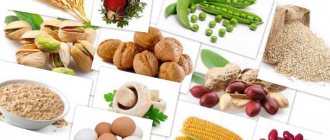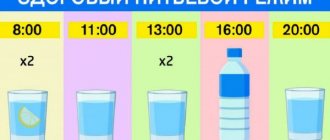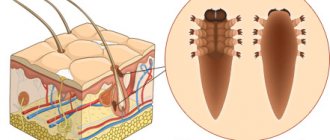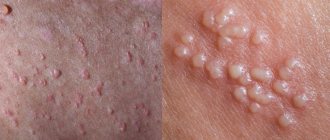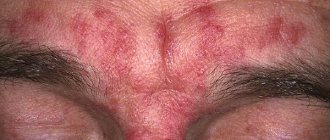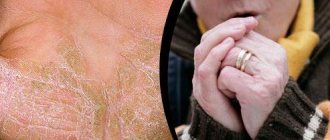Diet for allergies most often becomes an obligatory component of complex treatment. Excluding dangerous foods from the diet can negate all symptoms, while ignoring the necessary prohibitions, on the contrary, can lead to serious and even life-threatening consequences.
If the patient's condition is stable, diet may help neutralize symptoms even without the use of drug therapy. However, when creating a special menu, many nuances should be taken into account.
General rules of diet for allergies in adults
The main feature of allergies in an adult is that a rash can appear even from a product that was previously well absorbed by the body. Therefore, they treat not only new, but also proven ingredients with caution.
The general rules of diet for different types of skin allergies are as follows:
- are immediately checked by a doctor to stop the attack, identify the allergen, and draw up an individual treatment menu;
- refuse semi-finished products;
- make a list of everything they eat during the day (it is advisable to record the time of consumption);
- refuse food with spices and sauces;
- bake and boil foods.
Also, for successful treatment of allergies, special procedures are prescribed.
Types of allergies in children
Anything can become an allergen (material foreign to the body). A reaction occurs only when it enters the child’s body again. There are several types of allergies in children:
- food sensitivity is sensitivity to certain foods. Especially those that contain dyes or preservatives (glazed cheese curds, ice cream, preserved fish, etc.). Also, food allergies are often caused by: candy;
- protein foods (egg whites, milk, including condensed milk);
- chocolate;
- honey;
- fish;
- nuts;
- citrus;
- kiwi;
- carrots, etc.;
A rash on the face is one of the most common symptoms of food allergies in children.
Nutrition outside the period of exacerbations
Diet for skin allergies in adults is important not only in the acute phase, but also after the attack has subsided.
Dietary recommendations do not differ from the general rules of hypoallergenic diets:
- use a food diary (with its help it is easier to identify a reaction to a specific product and control the amount of food consumed);
- study the composition of any purchased products;
- do not eat processed foods;
- New dishes and products are tried with caution.
It is important that when eating any new food, someone is nearby to provide assistance if needed.
The second group is histamine liberators
Histamine liberators include foods that cause specialized immune response cells (mast cells) to release histamine.
This happens when the product is consumed in large quantities. Even if an allergic reaction has not been observed before.
Most often these products include: citrus fruits, pineapples, tomatoes, cocoa, chocolate, seeds and nuts, legumes (in particular soybeans), honey, spices and ester-rich products (horseradish, radish, radishes, mustard) and, of course, fast foods -food stuffed with dyes, flavors and preservatives.
Vermicelli, 340 gr, Shirataki
168 ₽
Dietary supplement NOT A MEDICINE
Diet rules during an exacerbation
During an exacerbation, the body may react poorly to a variety of new foods. Even a small dose of an allergen can cause a severe rash in this condition.
Dangerous products include:
- pickled vegetables;
- fresh peppers, tomatoes, radishes;
- margarine;
- store-bought sweets;
- drinks (coffee, chocolate);
- berries (raspberries, watermelon, sea buckthorn);
- fruits (melon, kiwi, apricots);
- all varieties of nuts;
- any types of mushrooms;
- sauces;
- spices;
- eggs;
- smoked, fried foods;
A diet for skin allergies excludes smoked and fried foods.
- spicy dishes;
- garlic, onion;
- white bread, semolina porridge, boiled dough (lasagna, pasta);
- lamb, chicken meat;
- butter.
Allowed use:
- mild cheese;
- refined vegetable oil;
- fructose;
- lean meat;
- mild juicy greens;
- apples, pears;
- any varieties of cabbage (only fresh or boiled vegetables);
- green peas, pumpkin (fresh or after heat treatment);
- croup (exception - semolina);
- fermented milk products (without additives).
Recommended types of heat treatment: boiling, stewing, baking. Frying and adding spices are prohibited. Salt is used with caution (dishes should be slightly salty).
Hypoallergenic nutrition for breastfed babies
Children up to one year of age are fully or partially breastfed. They suffer from allergies to various types of proteins. It is necessary to adjust the mother's diet in order to reduce the hyperreactivity of enzymes in her body. To do this, the mother must follow a hypoallergenic diet for the entire period of breastfeeding:
Food products that have flavor enhancers are excluded. The main diet consists of cereals, dietary varieties of fish and meat, green fruits and vegetables. It is preferable to prepare dishes from poultry, since factory-farmed livestock are treated with antibiotics, which accumulate in the meat.
It is permissible to start complementary feeding for children with allergies 1 month later than with healthy children at 7 months. In this case, the mother must follow a diet for the entire period of complementary feeding. All foods consumed by the mother are recorded in a diet diary. If a child suddenly has an allergic reaction, the product is added to the prohibited list.
The woman should stop using this product and also monitor the improvement of the baby’s well-being. If the child is mixed-fed, breast milk is partially replaced with various formulas. Baby food packages must not contain gluten or cow's milk.
Complementary feeding table:
| Complementary feeding by age | Description |
| First | Vegetable puree with finely ground ingredients is suitable: Brussels sprouts, white cabbage, zucchini. Vegetable puree is prepared from fresh ingredients. For the first feeding, the dish includes only one vegetable, and after 5-7 days you can add a new ingredient |
| Second | Introduced at 8-9 months. Rice, buckwheat, and corn porridge are used. They are prepared with water, without adding salt, sugar or spices. Up to 10 grams of vegetable oil is added to the porridge. If the dish is industrially produced, then the grains should not contain gluten |
| Third | Meat puree is allowed to be introduced at 9-10 months. Finely ground turkey, rabbit, and lamb are used. Parents should monitor the child’s body’s reaction to feeding meat. The reaction may be minor, but this does not mean that there is no allergy |
| Fourth | Conducted from 11-12 months. Fruits and green apples are introduced. It is necessary to pay attention to the baby’s stool; if there are no pathologies, then new ingredients are added to the menu |
Permitted and prohibited products
A diet for skin allergies in adults involves complete avoidance of some foods, while it only recommends limiting the consumption of others. Healthy products are also indicated in it.
All of them are presented in the table:
| Unhealthy food | Products safe in small quantities | Healthy foods |
|
|
|
The disappearance of allergy symptoms may be a superficial effect and may not reflect the condition of the body. You should not immediately return to eating foods from the first column of the table, because... this may lead to relapse.
To avoid it, follow these principles:
- Use whole raw foods for dishes.
- Study the list of ingredients for ready-made dishes.
- Avoid processed foods, foods with additives, and canned foods.
- Limit the consumption of sauces.
- Eat lightly salted foods.
- Eat only hard-boiled eggs, in very small portions (it is better to discard the yolk).
- They prefer fractional meals (small portions).
- Keep a food diary (2 months or longer).
Nonspecific hypoallergenic diet
A person suffering from allergies must, first of all, switch to a so-called nonspecific hypoallergenic diet. According to its principles, all products are conditionally divided into 3 groups: high-, medium- and low-allergenic. First of all, you need to exclude highly allergenic foods from your diet, and also seriously limit the consumption of moderately active ones.
Attention! The main difficulty in choosing a diet for food allergies is that allergic reactions in a particular person can be caused by any product, even those considered very low-allergenic. Therefore, the menu should be purely individual and adjusted under the supervision of a doctor.
For allergies, adults should follow a nonspecific hypoallergenic diet for 2–3 weeks, and for young children – 7–10 days. If improvement occurs during this time, then the excluded foods are reintroduced into the diet: one at a time, in small quantities, no more than after 3 days. At the same time, they carefully monitor whether the allergic reaction has resumed. If symptoms return within three days after introducing a new product, then it is an allergen. There may be more than one allergenic product, so this procedure must be done with each product.
While on a hypoallergenic diet, it is also important to adhere to the following rules:
- do not overeat;
- diversify your diet as much as possible within the limits allowed by the diet.
Attention! Ideally, we should strive to ensure that any of the products is consumed no more than once every 3 days. This is explained by the fact that allergic reactions can occur when a certain amount of allergen accumulates in the body.
- High: whole cow's milk, eggs, caviar, wheat, rye, carrots, tomatoes, bell peppers, celery, strawberries, strawberries, raspberries, citrus fruits, pineapples, pomegranates, kiwi, mango, persimmon, melon, coffee, cocoa, chocolate, mushrooms , nuts, honey, fish, pickled vegetables, sweet carbonated drinks, ice cream.
- Medium: beef, buckwheat, oats, rice, peas, beans, soybeans, potatoes, beets, peaches, apricots, cranberries, lingonberries, cherries, blueberries, black currants, rose hips, bananas.
- Low: fermented milk products, horse meat, rabbit meat, turkey, lean pork, lean lamb, cauliflower, white cabbage, broccoli, zucchini, squash, cucumbers, green varieties of apples and pears, white and red currants, white and yellow cherries, yellow varieties of plums , garden greens (parsley, dill).
Menu for the week
The diet for skin allergies in adults should be nutritious and balanced.
The table shows the menu option for 7 days:
| Day | Breakfast | 2 breakfast | Dinner | Afternoon snack | Dinner |
| 1 | tea, a handful of lean homemade baked goods | saucer with any light fruits (except citruses) | rice with vegetable oil, a small piece of turkey | vegetable/fruit puree from soft fruits | homemade cottage cheese, dried fruits, tea |
| 2 | kefir; pancakes baked in vegetable oil | banana | mashed potatoes (zucchini, carrot, peas); still water, any natural fermented milk dessert | natural homemade jelly (red is not recommended) | any porridge from the list of recommended ones (buckwheat, corn), tea with dried fruits |
| 3 | lightly salted oatmeal, hard-boiled egg, herbal tea, 1 small cracker | juice or tea with cookies (biscuits) | low-fat broth with chopped vegetables and meat, porridge in water with a little salt, fruit compote (preferably dried fruit) | yogurt or jelly | low-fat oatmeal, some steamed meat, tea |
| 4 | oatmeal with banana or apple slices; bread, greased with homemade cottage cheese; tea | homemade crackers, apple juice or water | creamy legume soup with chicken cutlet, light compote (no red fruits) | ready-made food “for the little ones” (1 jar) | vermicelli with weak chicken broth, tea, dried fruits |
| 5 | milk rice soup (milk is best diluted), tea | crackers, apple | rice with broth, pumpkin porridge with baked low-fat meatballs, compote | homemade yogurt is not too fatty (you can grate an apple, banana, pear into it) | buckwheat with turkey, tea |
| 6 | baby food or juice, any porridge with juice or diluted milk | dry cookies (homemade or “Maria”), fruit of your choice (except exotic and red) | creamy rice soup with a piece of rabbit meat, croutons, tea | kefir | cottage cheese casserole with dried fruits, tea |
| 7 | porridge (corn, rice) with apple, tea | juice (except citrus and any red) | pumpkin soup, boiled turkey | jelly (fruit or oatmeal based) | cottage cheese and fruit puree or organic cottage cheese casserole |
You should try the suggested dishes first to check your body’s reaction.
Recipes for a hypoallergenic diet
Soy milk soup with potatoes
200 g soy milk
3 potato tubers
Step 1. Peel the potatoes and onions, finely chop them into cubes, add water and cook for 15 minutes.
Step 2. Add milk, salt and cook for another 10 minutes.
Step 3. Pour into plates, sprinkle with parsley and serve
Creamy chicken soup
1 liter of meat broth
200 g minced boiled white meat chicken
2 tbsp. l. soy flour
Step 1. Mix a glass of broth and minced meat, add soy flour.
Step 2. Pour in the remaining broth, add salt, and bring to a boil.
Stuffed apples
250 g boiled lean beef
3 tbsp. butter
½ cup breadcrumbs
Salt, pepper, nutmeg
Step 1. Preheat the oven to 200 degrees C. Cut the apples into halves and remove the core.
Step 2: Melt the butter in a saucepan. Sauté the onion for 5 minutes until soft. Transfer to another bowl.
Step 3. Pass the beef through a meat grinder and combine it with onions.
Step 4. Add breadcrumbs, basil, nutmeg, salt, pepper, mix.
Step 5. Stuff the apples with this mixture, then place them in a baking dish and pour in 1 cup of broth. Cover with a lid and place in the oven for 35-40 minutes.
Step 6. Transfer the apples to another bowl. They shouldn't get cold. Pour the liquid the apples were cooked in into a saucepan. Keep on medium heat for about 3 minutes.
Step 7. Dissolve starch in cold water. Pour it into a saucepan. Cook until thickened. Serve the stuffed apples with this meat sauce.
Turkey meatballs with zucchini
1 turkey breast
Step 1. Grind the zucchini in a blender
Step 2. Grind the turkey meat and punch it together with the zucchini.
Step 3. Boil the rice until half cooked, add to the minced meat, add salt, and add finely chopped herbs.
Step 4. Make small meatball balls. Place them in a baking dish.
Step 5. Bake for half an hour at 180 degrees.
Cottage cheese casserole
2 tbsp. semolina
2 tbsp. butter
Step 1. Rub the cottage cheese through a sieve, add a little stevia extract or sugar. Add semolina.
Step 2. Beat the whites and add them to the cottage cheese.
Food diary
A hypoallergenic diet will be more effective if you immediately keep a diary of the foods you consume. Controlling your diet will help you quickly get rid of symptoms (skin rashes, swelling) and strengthen your body. After 21 days, journaling will become a habit. If a child has allergies, adults should also keep a diary of the child's food.
These posts help:
- regulate the amount of food consumed;
- control the BJU of the diet;
- competently prepare a daily or weekly diet;
- monitor the body’s negative reactions to a specific food and exclude it from the menu in time.
Food diaries are recommended by many nutritionists. The optimal duration of their management is a lifetime. To get rid of acute allergies and prevent relapse, the diary is used for about 2 months. This technique is called "grandmother's". You can make a table where the first column is a list of products consumed per day (write down immediately).
Next, the time of use, serving size, and BJU are recorded. To do this, you can use special nutritional value calculators. Breaks between servings should last 3 hours. In this rhythm, metabolic processes function best. The main purpose of a food diary is to prevent its owner from forgetting the contents of the daily menu and the volume of portions.
It is worth using diary applications that will allow you to:
- automatically determine the energy value, BZHU;
- save indicators;
- Conveniently record data at any time;
- take into account the user’s water balance, weight, lifestyle.
Digital diaries have some disadvantages: the absence of many dishes in their database, work depends on the Internet. But still, these programs are considered convenient and practical.
Diet porridge for children's menu
- Oatmeal;
- Buckwheat;
- Boiled rice;
- Millet porridge;
- Corn;
- Pea porridge;
- Chickpea puree;
- Fresh frozen beans.
Porridges are prepared salty and sweet, adding fructose in some cases. Buckwheat and oatmeal are boiled using water. Since there are restrictions on milk for children with allergies, no butter is added. The porridge is flavored with sesame oil if desired. Raw rice is crushed before cooking and then cooked in the oven in a special clay pot. You can also steam rice with the addition of onions, minced meat and peas.
It is better to freeze green peas to add to dishes for food allergies in the summer yourself.
To prepare chickpea puree, boil it and then grind it in a blender. The dish is suitable as a side dish for cutlets or meatballs. But you can not only prepare hypoallergenic porridge from buckwheat, but also use it as an ingredient for making cutlets. To form the products, the cereal must first be ground and then mixed with minced meat. Lazy cabbage rolls are considered a nutritious dish; they are prepared according to the usual recipe for children prone to food allergies.
Diet for food allergies
The hypoallergenic nutrition system helps with all types of allergies. During such a diet, you can determine the cause of the allergic reaction, improve digestion, and take care of the immune system.
Most often, a hypoallergenic diet is recommended in case of a reaction to a food product. The main goal is to quickly identify and eliminate dangerous foods and reduce the allergenic load. In this case, nutrition remains complete, rich, but gentle. The daily portion of salt, according to the diet, is no more than 6 g.
Food is boiled in boiling water or steamed. Soups are prepared on the basis of weak broth. The daily calorie content of a hypoallergenic diet is 2800 kcal. The entire volume of food is divided into 6 servings. Fasting is not recommended.
Traditional allergens are excluded:
- alcohol;
- factory food;
- cheeses;
- all fatty meat products;
- mushrooms;
- eggs;
- juices (especially red, store-bought);
- hot and sour sauces;
- smokedness, saltiness;
- everything sweet (including honey, sugar, homemade cakes);
- coffee, chocolate drinks;
- chocolate bars, sweet masses with cocoa;
- pungent and bitter plants (horseradish, radishes);
- red and orange plant foods;
- exotic products (pineapple, kiwi);
- any types of nuts;
- citruses;
- all seafood (including seaweed, any fish).
Over time, the listed items are introduced into the menu carefully, because reactions to them may differ.
The diet for skin allergies in adults should include:
- lean flour products without yeast (lavash, white crackers, lean flatbreads);
- drinks with dried fruits (teas, compotes);
- some fruits (green/white apples, pears);
- vegetables (cabbage, legumes, cucumbers);
- young, non-spicy greens;
- feta cheese (processed, tart cheeses are prohibited);
- fermented milk products: farm cottage cheese, kefir; moderate fat yogurt without additives;
- oatmeal, buckwheat, light rice (boiled, flavored with vegetable fat);
- vegetable oils (preferably without sediment and bitterness);
- vegetarian soups containing only recommended ingredients;
- clean white meat (fat and skin removed).
The final composition of the treatment menu is determined only by a specialist after tests. They come out of this diet gradually. New positions (from the prohibited list) are introduced after 3 weeks of strict regime. It is worth adding them only one at a time, in small portions, assessing your condition. First, homemade organic products are preferred.
Factory-made treats are introduced last. It is important to note: a reaction to a new food may take a couple of days to appear, so after eating it you should wait 3 days and only then try the next product. If the reaction is negative, the allergen is no longer consumed.
Histamine-containing products.
Histamine is the most important universal mediator of vital physiological and pathological processes, obtained from the amino acid histidine. However, its excess leads to the launch of an indirect inflammatory reaction with allergic manifestations. Histamine is a kind of stimulant of the immune system, warning of danger. When an allergen or toxin enters the body, due to histamine, the blood vessels expand and swell and an immediate allergic reaction is triggered.
Unprocessed fresh foods contain very small amounts of histamine, but the longer the food is stored or ripened, the more histamine it accumulates.
Foods high in histamine include: pickles, vinegar, beer, champagne, wine, tomato ketchup, canned food (especially fish), yeast products, aged cheeses, soybeans, bananas, avocados.
But not only foods can be stimulators of histamine release, but also exogenous factors, which include:
- allergic reactions;
- various diseases;
- injuries;
- hypoxia;
- radiation exposure;
- stress;
- taking certain medications.
Foods that show signs of spoilage should not be consumed, since bacteria that contaminate them are capable of producing histamine from histidine in large quantities.
Pay special attention to the proper storage of fish, in particular the mackerel family, and seafood. It is these foods that can cause severe histamine poisoning.
Diet for protein allergies
The main difficulty in eliminating this allergen from the diet is that it is an ingredient in a wide variety of products:
- factory-made meat and fish products;
- sweets;
- bakery;
- sauces;
- flour products (including bread).
Should be removed from the menu:
- whey;
- tagatose;
- renin;
- recaldent (used for brushing teeth, in bleaches, chewing gum);
- protein in any form;
- casein;
- lactose, lactulose;
- diacetyl;
- any creams;
- all dairy/fermented milk products;
- milk fat, flavorings.
In the absence of a vegetarian industry, it can be difficult to create protein-free menus.
It is worth listening to some recommendations from nutritionists:
- you need to use soy milk (sometimes enriched with additives and vitamins, but it is better to take “pure”);
- it’s worth preparing or purchasing almond milk (look for recipes on the Internet);
- it is necessary to consume soy yoghurts (they are enriched with beneficial bacteria);
- you can drink oatmeal jelly with bifidobacteria;
- It is worth carefully analyzing the composition of store products, creating an individual “white list” of names and brands (after this, purchasing food will not be a hassle);
- in restaurants, it is important to choose only natural, familiar dishes, if desired, specifying their composition (order broths, vegetable sauces, sorbets).
It is worth excluding products with a large list of additives (especially under the letter “E”).
What causes allergies
An allergy is a reaction of the body’s immune system to a foreign protein (antigen) that enters it. The immune system begins to fight the irritant, producing antibodies against it. At this moment an allergic reaction occurs. The tendency to such manifestations is considered a chronic disease. In recent years, the number of patients with this diagnosis has been constantly increasing.
The irritant can enter the body in different ways: it can be eaten (food allergy), inhaled (hay fever), injected with medications, insect bites, or through contact with objects containing the allergen (contact dermatitis).
Adhere to dietary restrictions, while doctors very often recommend any of the options: the diet can reduce the overall load on the body's systems and help it cope with exacerbation of the disease. This is especially true in severe forms of the disease.
Allergy symptoms can manifest themselves in the form of itching and skin rashes, runny nose, sneezing, watery eyes, coughing, and bronchial asthma. In the absence of adequate treatment and gentle treatment, allergies can lead to deadly conditions: angioedema, suffocation, anaphylactic shock (shortness of breath, convulsions, loss of consciousness).
Diet for drug allergies
This type of allergy is a reaction to medications, which is accompanied by general and local symptoms.
The most common allergens are:
- vaccines;
- barbiturates;
- insulin;
- anticonvulsants;
- penicillin group;
- sulfonamide medications.
Causes of allergies:
- allergic diseases (asthma, hay fever);
- fungus;
- heredity;
- long course of certain medications.
In this case, oral medications are considered the most allergenic. Some symptoms can be seen immediately after administration of the drug (“early”), and some are visible only after a couple of days (“late”).
Early symptoms include:
- anaphylactic shock;
- rash;
- itching of the skin and mucous membranes;
- cough, sneezing.
“Late” symptoms include:
- organ dysfunction (neuritis);
- polyarthritis;
- fever;
- purpura, vasculitis.
Only an allergist carries out diagnostics, prescribing:
- skin tests;
- immunogram;
- blood, sputum, mucus tests;
- rhinoscopy;
- stool analysis;
- endoscopy.
The treatment process for drug allergies includes:
- stopping taking the allergen medication;
- immunotherapy;
- taking vasoconstrictors;
- use of antihistamines;
- use of glucocorticosteroids;
- diet.
Drug allergies are often complicated by food allergies.
Therefore, during treatment exclude:
- all sweets and sweet ingredients (sugar, honey);
- alcohol;
- chocolate products;
- canned food;
- all offal;
- pickled, smoked food;
- food with dyes and flavor enhancers.
The main danger of an allergy to medications is that if not detected and treated promptly, the airways can become swollen. In the most difficult cases, this can even lead to death. Before consuming drugs that have a strong effect on the body, it is necessary not only to discuss with your doctor the recommended doses and period, but also drug interactions and possible side effects.
Dietary nutrition involves giving up not only foods that cause an individual negative reaction. It is important for adults and children to avoid other allergenic foods. If the first rash appears on the skin, you should immediately contact a specialist.
Author: Zemskaya Olga Anatolyevna (folk)
Article design: Oleg Lozinsky
What do doctors advise?
When planning a diet during allergies, you need to listen to the opinion of an allergist. Many patients neglect an integrated approach to eliminating the problem, as a result of which taking medications and following a diet becomes pointless.
Not only diet and taking antihistamines and sorbents are a mandatory aspect of medical therapy. At the same time, you need to get rid of the cause of the disease in a particular case: from the main household dust collectors - carpets, upholstered furniture, old magazines and books. And this is not a whim of a specialist, but part of a comprehensive therapeutic approach.
You cannot rely on your own knowledge or the Internet to select medications for yourself to treat an allergic reaction. Any self-medication is not only fraught with the lack of proper results, but also with the development of serious health complications and aggravation of the clinical picture of the disease. It is prohibited to independently take antibacterial and sulfonamide drugs for therapeutic purposes if you know that you are allergic to some of them. If you have a drug allergy, any medication you need to take should be discussed with your doctor in advance.
It is completely thoughtless and wrong to put your own health and life at risk. It is no secret that mild allergic rhinitis or urticaria, in the absence of a proper therapeutic approach and prolonged neglect of the condition, after some time can develop into a more complex form of allergy, for example, bronchial asthma.
A healthy, balanced diet is the foundation of human health. If a person suffers from one type of allergy or another, he must consciously exclude potentially dangerous foods from his menu. Each patient has his own list of foods that he needs to give up. Only under this condition can you forget about exacerbations of an allergic disease for a long time, extending your period of remission.
Honey as a cause of allergies
Honey is a multicomponent product, so allergies in a child under three years of age or older are usually provoked by one of its components. Usually the reaction is associated with an allergy in the child to the pollen of one of the plants. During processing, pollen partially loses its allergenic properties, but the remaining ones are enough for the baby to develop a disease. If you correctly determine which plant pollen is an allergen, then the child will not have to follow a strict diet: honey with pollen from flowers that are safe for the baby can be given as food.
Allergy centers conduct special studies. They allow you to identify the allergen as accurately as possible. The disease develops quite rapidly in children and, as a rule, requires symptomatic treatment. But in some cases the manifestations are so severe that the little allergic person has to be hospitalized.
Bottom line
It is important to understand that allergies are a disease that can be treated not only with medications, but also with the help of a properly selected hypoallergenic diet. This applies to both children and adults. This approach to treatment has been successfully used for several decades.
Maintaining proper nutrition from the first days of an exacerbation of allergies will help reduce the severity of all symptoms and reduce the risk of possible complications. The effectiveness of such nutrition is enhanced if the main allergenic product is accurately identified.
Analyzes
When creating a hypoallergenic diet, it is important to understand what irritant caused symptoms to appear. To do this, there are various methods for identifying the main allergens that provoke pathology, these are:
- skin, elimination and provoking tests;
- blood tests;
- prick test for allergies.
An important step is preparing for the tests; this topic is covered in more detail here.
